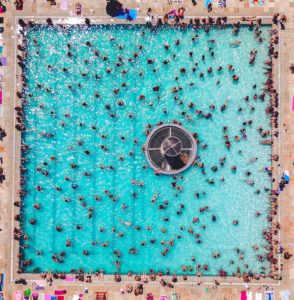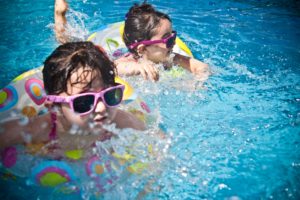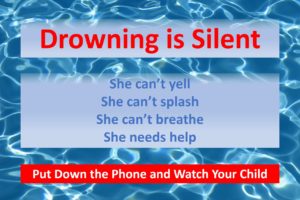
For many Kentuckians, Labor Day marks the official end of summer fun. Around the Commonwealth, people flock to the lakes and pools for one last hurrah. With all the excitement, it is easy to forget that more people in and around the water means more people at risk of drowning. Every time someone Googles “drowning lawyers,” there’s a devastated family behind the search , so let’s stay aware, reduce the risk of drownings, and save families from heartbreak this Labor Day.
Stats on Drowning to Make it “Real”
Just last year, the Great Lakes communities experienced the “deadliest year on record” for Labor Day drownings, with 12 dead in that region alone. People in pools were no safer. During 2018, the USA Swimming Foundation estimated at least 148 children under the age of 15 died in pools between Memorial Day and Labor Day.
No matter the time of year, drowning statistics are gut-wrenching. According to the most recent data on drowning-related deaths from the Centers for Disease Control and Prevention (CDC) …
- There are about 10 drowning deaths per day in the U.S., not related to boating. There are an additional 300+ deaths per year related to boating activities.
- 1 out of every 5 drowning deaths involves a child under the age of 14. For every 1 of those deaths, another 5 children receive emergency care for non-fatal drowning.
- Children ages 1 to 4 have the highest rates of drowning.
- More than 50% of non-fatal drownings require hospitalization for injuries including severe brain damage.
As wrongful death lawyers, we take the worst calls imaginable – calls from families of victims – families just like the families of the drowning victims included in the above statistics. You might be surprised by the total number of Google searches for “drowning” and “drowning lawyers,” especially peaked during the summer, compared to searches for other types of wrongful death throughout the year (shown in chart below).

The data is heartbreaking . . . so, let’s focus on prevention.
Take All Possible Precautions to Avoid Wrongful Deaths from Drowning, Especially Among Children.
 The following are the greatest risk factors for drowning:
The following are the greatest risk factors for drowning:
- Lack of Swimming Ability,
- Lack of Barriers,
- Lack of Close Supervision,
- Location,
- Failure to Wear Life Jackets, and
- Alcohol Use.
Given the above statistics and risk factors, the following are among the most effective measures to prevent drowning fatalities:
- First and foremost, always, always, always watch the pool! Drowning happens quickly – even when lifeguards are present.
- On crowded days (like Labor Day), it is hard to keep an eye on everyone in the pool. Station people to watch throughout the area and designate “buddies” – even for teenagers.
- Do not allow anyone who cannot swim in or near the pool area alone – meaning without one-on-one contact with an adult, swimmer. Do not merely sit poolside and assume children will stay in the shallow end of the pool and play with their friends.
- If you host a pool party, make sure ropes clearly divide the “deep” from the “shallow” end.
- Place a barricade between children and the pool. A four-sided fence (separating the pool area from the house and yard) reduces a child’s risk of drowning 83% compared to three-sided fence where the pool isn’t completely fenced from the house.
- When it is time play games or time to eat (or anything that takes a lot of people away from the pool), make everyone leave pool. When everyone leaves the pool, check for anyone left behind, and do not allow anyone to jump back into the water until the pool “reopens.”
- Most child victims, ages 1 to 4, drown in home swimming pools. The percentage of drownings in lakes, rivers, and oceans increases with age. If a group of teenagers and/or young adults accompanies you to the lake this Labor Day, remember that they are not safe merely because they can swim. Watch everyone.
- Make everyone wear a life jacket – especially when boating – (including yourself and those teenagers and young adults mentioned above). In pools, provide all young children with lifejackets and wearable flotation devices. In 2010, 72% of boating deaths were caused by drowning, and 88% of the victims were not wearing life jackets.
- Avoid drinking excessive alcohol when swimming and when supervising children in the pool area. Among teens and adults, alcohol use is involved in up to 70% of recreational drowning deaths.
- Learn CPR. Quick-response resuscitation is often the difference between life and death for a drowning victim. The faster the response, the lesser the possibility of brain damage among surviving victims.
- Use the buddy system. Always swim with a friend.
- If you do not know how to swim, do not be embarrassed. Many adults cannot swim. Before next pool season, take lessons. Same is true for children. If your child does not know how to swim, enroll him or her in swim lessons before next season. In Louisville, the YMCA is a great resource for swim lessons.

Returning to the first and foremost, always watch the pool – part of watching the pool is arming yourself with the knowledge necessary to spot a drowning victim. Remember that drowning does not look like drowning. DROWNING IS SILENT. In most circumstances, there is no splashing; there is no waiving; there is no yelling, and there are no calls for help.
Recognizing a Drowning Victim
The American Red Cross describes two (2) categories of drowning victims: Active Drowning Victims and Passive Drowning Victims. Victims in each category exhibit certain characteristics.
Active Drowning Victims
An active drowning victim struggling to remain at the surface of the water has distinctive arm and body positions. This behavior is now referred to as the instinctive drowning response. Francesco A. Pia, Ph.D. first defined the process like this:
- Except in rare circumstances, drowning people are physiologically unable to call out for help. The respiratory system was designed for breathing. Speech is the secondary or overlaid function. Breathing must be fulfilled before speech occurs.
- Drowning people’s mouths alternately sink below and reappear above the surface of the water. The mouths of drowning people are not above the surface of the water long enough for them to exhale, inhale, and call out for help. When the drowning people’s mouths are above the surface, they exhale and inhale quickly as their mouths start to sink below the surface of the water.
- Drowning people cannot wave for help. Nature instinctively forces them to extend their arms laterally and press down on the water’s surface. Pressing down on the surface of the water permits drowning people to leverage their bodies so they can lift their mouths out of the water to breathe.
- Throughout the Instinctive Drowning Response, drowning people cannot voluntarily control their arm movements. Physiologically, drowning people who are struggling on the surface of the water cannot stop drowning and perform voluntary movements such as waving for help, moving toward a rescuer, or reaching out for a piece of rescue equipment.
- From beginning to end of the Instinctive Drowning Response people’s bodies remain upright in the water, with no evidence of a supporting kick. Unless rescued by a trained lifeguard, these drowning people can only struggle on the surface of the water from 20 to 60 seconds before submersion occurs.
Also, be on the lookout for anyone who is not making forward progress in the water. Someone (especially a young child) may appear to “doggy paddle,” but a drowning victim will not make any forward progress.
Passive Drowning Victims
Passive drowning victims do not struggle. They simply slip below the surface. The Red Cross explains that these victims:
- Might appear to float around the surface,
- Might sink to the bottom,
- May be limp or exhibit convulsive movements,
- May have no defined arm or leg action, no locomotion, and no breathing, and
- Might be face-down, on one side, or face-up, if at the bottom.
As a word of caution, it is very difficult to see a person underwater or on the bottom of a pool. The glare, water movement, other swimmers, and/or a number of other factors obscure the appearance of people and things below the surface. Drowning victims are often described as looking like a shadow, a smudge, or an object (such as a towel).
When you are watching the pool – because you are always watching the pool – remember the foregoing. Above all, remember drowning does not look like drowning.
We highly recommend that anyone who regularly hosts pool parties, owns a pool, attends lake gatherings, and/or frequently visits crowded neighborhood or city pools do additional research and learn more about water safety and drowning prevention. The American Red Cross website offers many helpful videos, instruction manuals, and other materials for purchase.
As Louisville wrongful death attorneys at DeCamillis & Mattingly, we are here for families who experience the loss of a loved one, but we would much rather help prevent those calls than receive them. Have fun this Labor Day, but let’s keep it fun by using all precautions to prevent drowning. Thank you!


